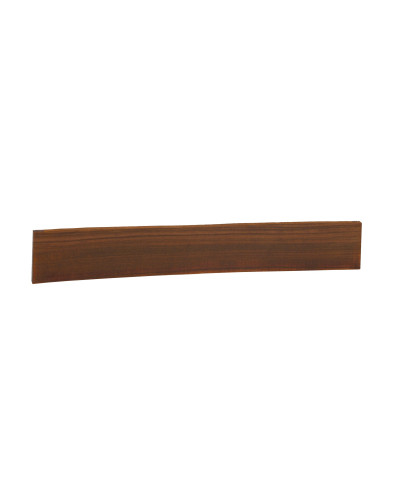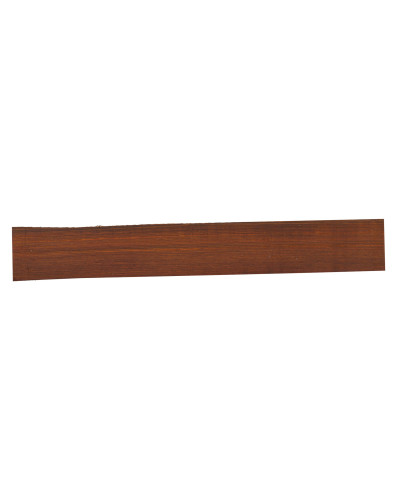Cocobolo
Cocobolo is a stunning wood with a great respond to the sound, and with an impressive aesthetic finish. For all these qualities, cocobolo is increasingly becoming a great alternative to the traditional Indian Rosewood fingerboards.
Cocobolo produce a similar sound to Koa wood, clear and with brighter high notes. However, we have to work this wood carefully since it is a wood with high content of oils.
Hardness and resistance are one of the most important qualities for fingerboards, so Cocobolo fingerboards for Classic Guitar are a perfect option to this important part of your instrument.
BOTANIC NAME: Dalbergia retusa.
COMMON NAMES: Cocobolo, Granadilla, Cocobola.
ORIGIN: Nicaragua.
DESCRIPTION: Density 990-1250 Kg/m3. Cocobolo can have different colours, ranging from yellow, orange, red, and shades of brown with streaks of black or purple. Sapwood is typically a very pale yellow. Colours are lighter when freshly sanded/cut, and darken with age. Grain is straight to interlocked, with a fine even texture. Good natural luster. Notoriously allergenic.
RECOMMENDATIONS: Due to the high oil content found in this wood, it can occasionally cause problems with gluing. Also, the wood’s colour can bleed into surrounding wood when applying a finish, so care must be taken on the initial seal coats not to smear the wood’s colour/oils into surrounding areas. Tear out can occur during planning if interlocked grain is present; the wood also has a moderate blunting effect on cutting edges/tools due to its high density. Cocobolo has excellent turning properties.
DRYING: Slow drying wood. Risk of deformation or cracks.
USES: Guitar backs and sides, fingerboards, bridges, headplates. Wind instruments.



